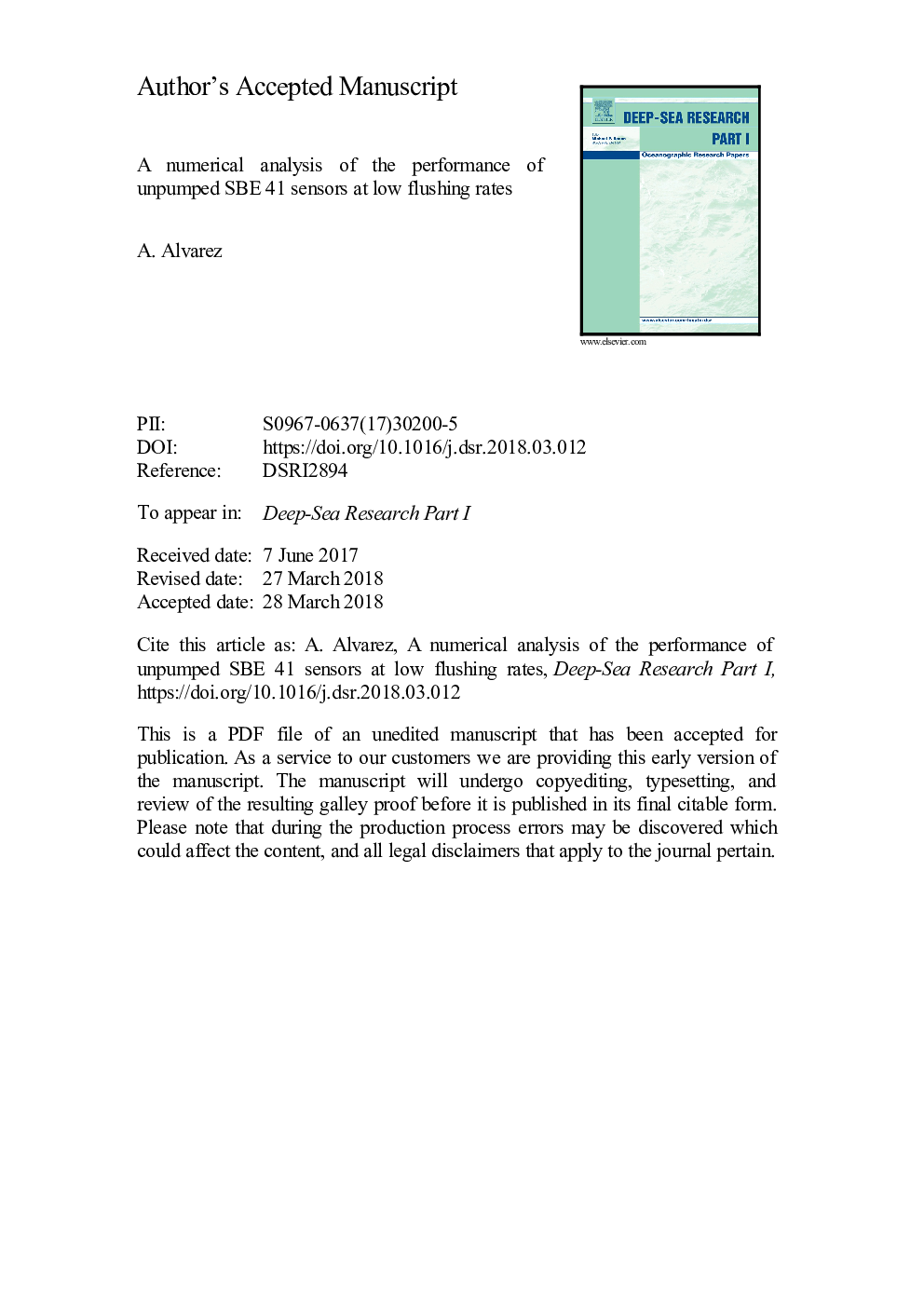| Article ID | Journal | Published Year | Pages | File Type |
|---|---|---|---|---|
| 8884237 | Deep Sea Research Part I: Oceanographic Research Papers | 2018 | 38 Pages |
Abstract
The thermal and hydrodynamic response of a Sea-Bird unpumped CTD SBE 41, is numerically modeled to assess the biases occurring at the slow flushing rates typical of glider operations. Based on symmetry considerations, the sensor response is approximated by coupling the incompressible Navier-Stokes and the thermal advection-diffusion equations in two dimensions. Numerical results illustrate three regimes in the thermal response of the SBE 41 sensor, when crossing water layers with different thermal signatures. A linear decay in time of the bulk temperature of the conductivity cell is initially found. This is induced by the transit of the inflow through the conductivity cell in the form of a relatively narrow jet. Water masses with new thermal signatures do not immediately fill the sensor chambers, where the cross-section widens. Thermal equilibrium of these water masses is then achieved, in a second regime, via a cross-flow thermal diffusion between the boundary of the jet and the walls. Consequently, the evolution of the bulk temperature scales with the square root of time. In a third regime, the evolution of the bulk temperature depends on the thermal gradient between the fluid and the coating material. This results on an exponential decay of the bulk temperature with time. A comprehensive analytical model of the time evolution of the bulk temperature inside a cell is proposed based on these results.
Keywords
Related Topics
Physical Sciences and Engineering
Earth and Planetary Sciences
Geology
Authors
A. Alvarez,
